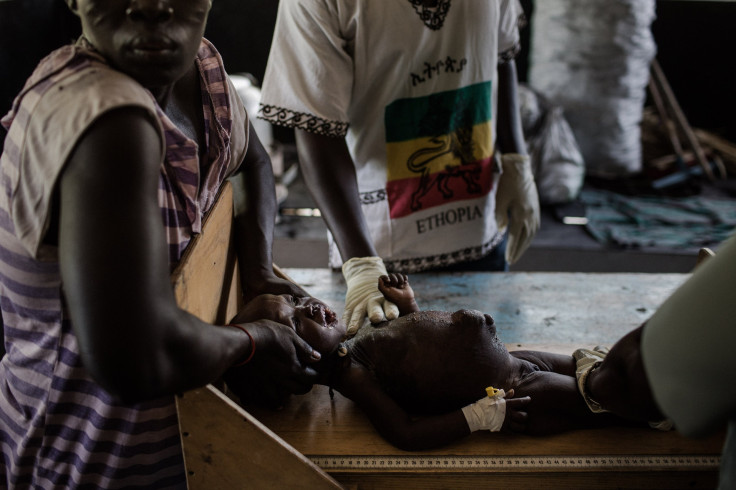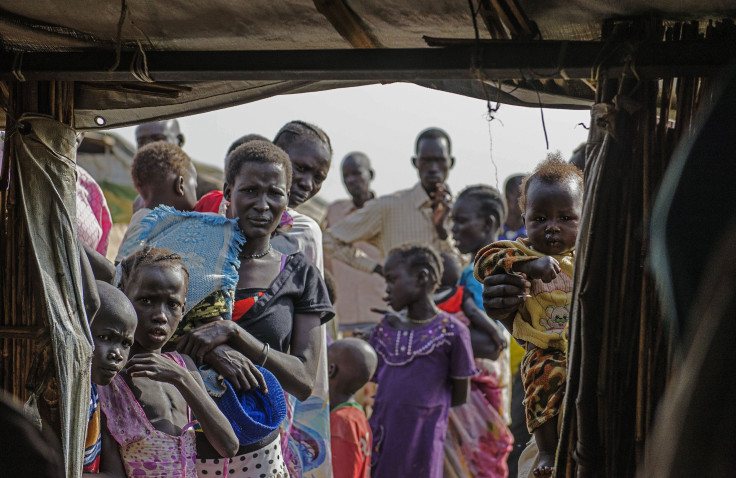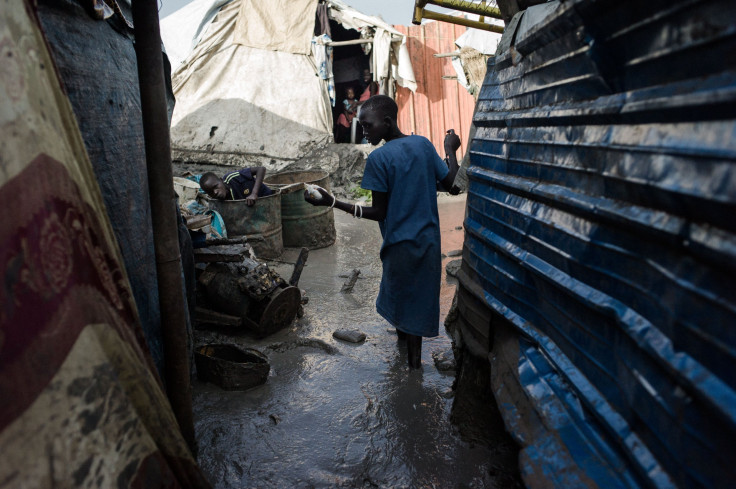South Sudan On The Brink: Failing Currency And Armed Conflict Pushes Country Closer To Famine

In the southern city of Morobo, South Sudan, mangoes litter the ground beneath the trees that line the roads. But 500 miles north, in the northeastern city of Malakal, people are severely malnourished and rely entirely on shipments of food from humanitarian groups. The stark difference between the two cities -- one bordering Uganda, the other, Sudan -- represents a wider phenomenon that could push the world’s youngest nation into a man-made famine.
The famine in South Sudan, not yet officially declared, will be the result of an avoidable armed conflict and the failure of the government to invest in local infrastructure, aid workers say. George Fominyen, a spokesman for the World Food Program (WFP), one of the main United Nations agencies working to prevent starvation among the South Sudanese people, told International Business Times that the surplus of mangoes and other goods in Morobo rarely makes it to the northern communities that need it most, because the roads are impassable.
“We are extremely concerned about the conflict in South Sudan and the food situation,” Fominyen said in a phone interview. “Humanitarian organizations have very little access to south and central Unity State, where the situation is the worst.”
Consequently, communities in the arid, dry lands in the north are suffering from malnutrition. The combination of escalating levels of armed fighting, a dwindling economy and underdeveloped infrastructure has put South Sudan on the verge of declaring a nationwide famine, an official declaration that could come in September, Fominyen said.

The Integrated Food Security Phase Classification (IPC) is a food security analysis tool that compiles data from several organizations and classifies the state of food insecurity in countries across the world. The most recent report issued by the IPC shows that the majority of the country is already in “crisis” mode, which means at least 20 percent of households in any given state have significant food consumption gaps and high levels of malnutrition. At least five states in the northeastern part of the country are classified by the IPC as experiencing an “emergency” -- the people living there have even higher levels of acute malnutrition and often die. There is only one level above “emergency," -- “famine.”
Approximately 4.6 million people in South Sudan are facing severe food insecurity, meaning they lack access to enough food for all household members. That number doubled from May to July, according to the World Food Program, because the exchange rate of the South Sudanese pound reached a low of 12.25 SSP to the U.S. dollar. Fuel shortages also hit the country hard this month, continuing the currency's depreciation and causing a spike in fuel prices, making it increasingly difficult for local vendors to pay for food deliveries.
The South Sudanese economy has been on the decline since the country declared independence in 2011. Following the outbreak of civil war almost two years ago, 10,000 people have been killed and more than 1.6 million have been internally displaced, ensuring South Sudan stays one of the world's poorest countries.

In June, the New York Times editorial board wrote that the landlocked country, which gained independence from Sudan in 2011, ranked "among the most astounding failures in Africa." Earlier this month, the World Bank placed South Sudan, the third largest recipient of U.S. international aid, back into the low-income, least-developed countries category, a bracket where per capita incomes are $1,045 or less.
Fominyen said WFP, in partnership with Unicef and other aid organizations, are doing their best to distribute food aid to communities in need, but their convoys are often restricted from entering violent conflict zones. Aid organizations frequently have trouble transporting food supplies into the country because local authorities either seize the resources or prevent the convoys from passing down certain roads.
Aid organizations that are able to distribute food aid inside the country receive shipments through several different corridors, including those leading from Kenya, Uganda and Juba, the capital of South Sudan. In the past year, groups in South Sudan have also received shipments through Port Sudan and the Port of Djibouti. Other times, humanitarian organizations conduct air drops from a base in Ethiopia using Ethiopian aircrafts.
The government has mostly hindered rather than helped the humanitarian organizations working to stem the crisis. Earlier this summer, the South Sudanese president expelled the U.N. humanitarian coordinator for criticizing the government in Juba.
The U.S. and other western nations are pushing for a diplomatic solution, entreating warring groups to sign a peace agreement. Last week, South Sudan's rebel leader Riek Machar and President Salva Kiir signed a peace deal sanctioned by the United Nations to end the brutal 20-month conflict. Despite the historic signing, the deal looks to have fallen apart as both sides Monday accused the other of violating the agreement. The breakdown of the peace deal signals that fighting will continue to ravage a country that is in desperate need of peace in order to feed its citizens.
© Copyright IBTimes 2024. All rights reserved.





















